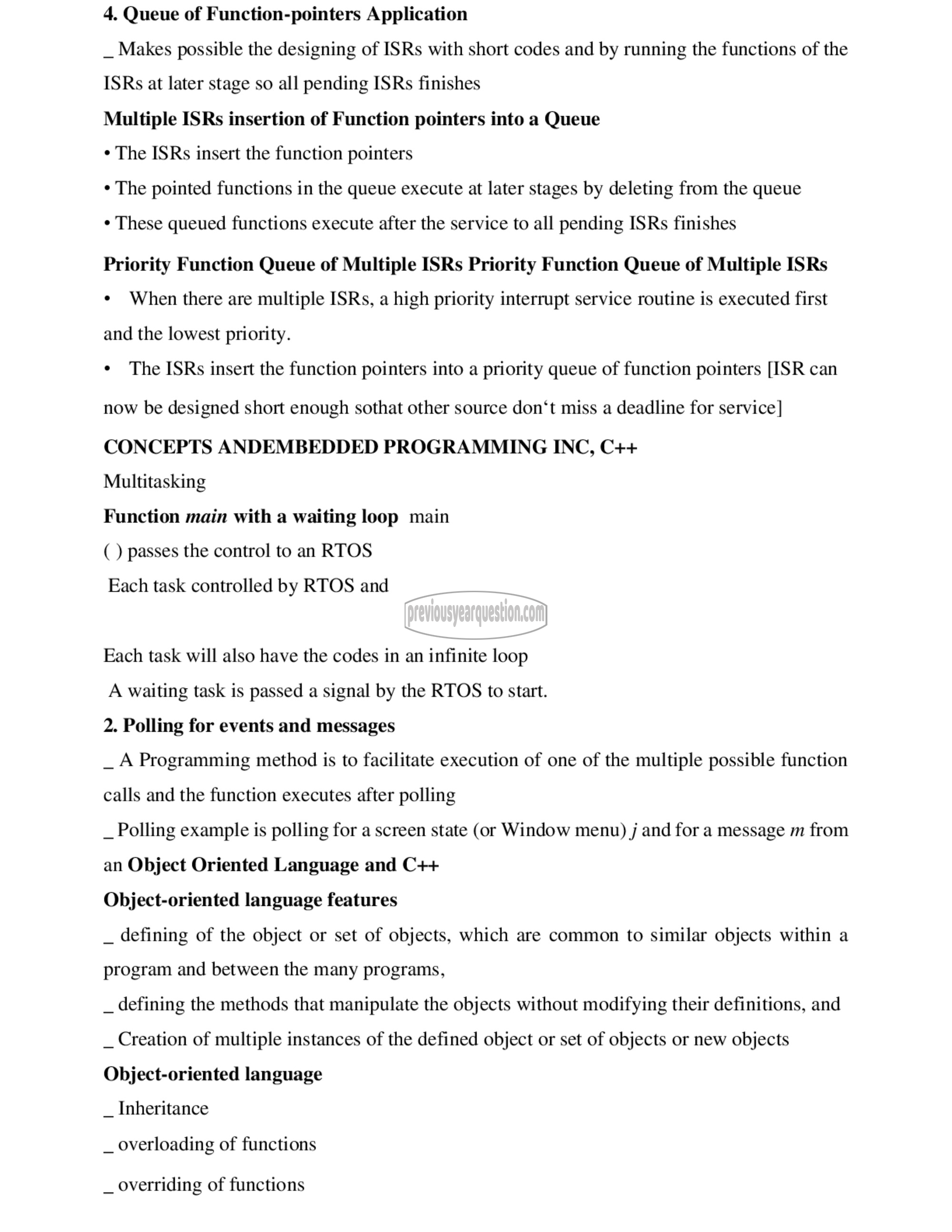APJ ABDUL KALAM TECHNOLOGICAL UNIVERSITY Previous Years Question Paper & Answer
Semester : SEMESTER 6
Subject : Embedded System
Year : 2018
Term : MARCH
Scheme : 2015 Full Time
Course Code : EC 308
Page:33
4. Queue of Function-pointers Application
_ Makes possible the designing of ISRs with short codes and by running the functions of the
ISRs at later stage so all pending ISRs finishes
Multiple ISRs insertion of Function pointers into a Queue
* The ISRs insert the function pointers
* The pointed functions in the queue execute at later stages by deleting from the queue
* These queued functions execute after the service to all pending ISRs finishes
Priority Function Queue of Multiple ISRs Priority Function Queue of Multiple ISRs
உ When there are multiple ISRs, ೩ high priority interrupt service routine is executed first
and the lowest priority.
٠ The ISRs insert the function pointers into a priority queue of function pointers [158 can
now be designed short enough sothat other source don‘t miss a deadline for service]
CONCEPTS ANDEMBEDDED PROGRAMMING INC, C++
Multitasking
Function main with a waiting loop main
( ) passes the control to an RTOS
Each task controlled by RTOS and
Each task will also have the codes in an infinite loop
A waiting task is passed a signal by the RTOS to start.
2. Polling for events and messages
_ A Programming method is to facilitate execution of one of the multiple possible function
calls and the function executes after polling
_ Polling example is polling for a screen state (or Window menu) j and for a message m from
an Object Oriented Language and C++
Object-oriented language features
_ defining of the object or set of objects, which are common to similar objects within a
program and between the many programs,
_ defining the methods that manipulate the objects without modifying their definitions, and
_ Creation of multiple instances of the defined object or set of objects or new objects
Object-oriented language
_ Inheritance
_ overloading of functions
_ overriding of functions
